Hippeastrum are distinguished by sophistication and exoticism. The plant's decorative value is represented by its unusually beautiful flowers. You can appreciate all the charm of the indoor flower of the hippeastrum by looking at the plant photo. The flower belongs to the Amaryllis family and is represented by more than 90 species, each of which is able to decorate the home collection. Hippeastrum is often confused with Amaryllis, but despite the fact that these are flowers of the same family, they are assigned to different genera.
Content
Homeland and the history of cultivation
Hippeastrum is a bulbous perennial native to the African tropics and subtropics. The greatest concentration is observed in Brazil, Bolivia, Pe Scientists believe that it is from these places that the plant originates.
The flower first came to Europe in the 16th century. Using his exotic beauty, he instantly won the hearts of flower growers. It should be noted that at that time hippeastrum was mistakenly called amaryllis.
The first hybrid appeared only in the middle of the XVIII century. It got its name in honor of its creator - Hippeastrum Johnson. Scientists have shown interest in plant hybridization. In the 19th century, it already numbered 100 hybrids. At the same time, the flower was first brought to Russia. The first exhibition of amaryllis was held in the St. Petersburg Botanical Garden.
In Russia, this plant was appreciated. Almost immediately after the exhibition, hippeastrum bulbs were grown on an industrial scale, and scientists from the Institute of Experimental Biology began to hybridize new varieties. Today, Hippeastrum is considered a separate genus of plants, which belongs to the Amaryllis family. With amaryllis, he only connects to the same family.
Hippeastrum flower characteristics and species diversity
Bulbs of the plant are tunic (closed) with tight-fitting scales. They can have a spherical or oval shape. The diameter of the adult bulb varies from 5 to 10 cm. On the edges of the bottom are filiform adnexal roots.
The leaves are linear, grow opposite. In an adult plant, they can reach up to 70 cm in length and 5 cm in width. In most varieties, the color is represented by saturated shades of green. Red-leaf hybrids are also found.
Flowers are arranged on the flower-bearing arrow. Outwardly, they look like lily flowers. The maximum diameter of the flower is 25 cm. Depending on the variety, they can have a funnel or tubular shape, monophonic or multi-colored. There are many terry varieties.
In indoor floriculture, mainly Leopold - hypeastrum hybrids are used. By the color of the petals, the following groups of this plant are distinguished:
- reds;
- orange
- pink;
- white
- yellow;
- green
- two-tone;
- tricolor.
The following varieties belong to the group of red hippeastrum:
- Magnam - large flowers of saturated red color, closer to the neck turning into cherry.
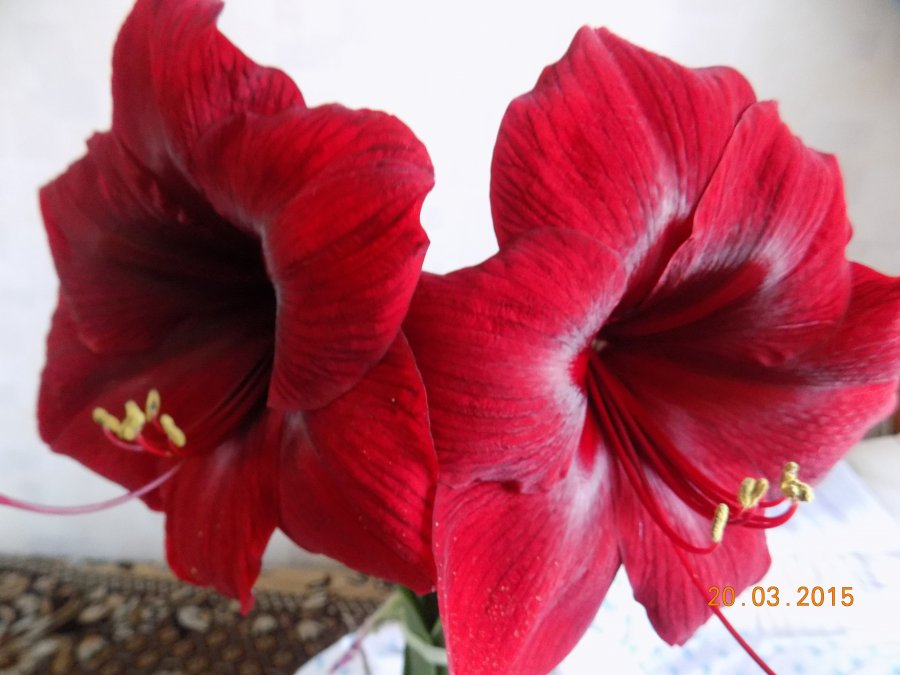
Magnam - Black Pearl is a large-flowered variety with dark cherry petals.
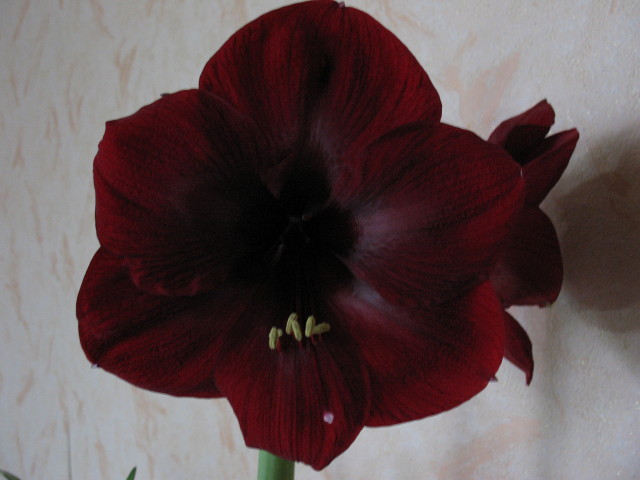
Black Pearl - The cherry nymph is a large-flowered terry hybrid with bright red flowers.
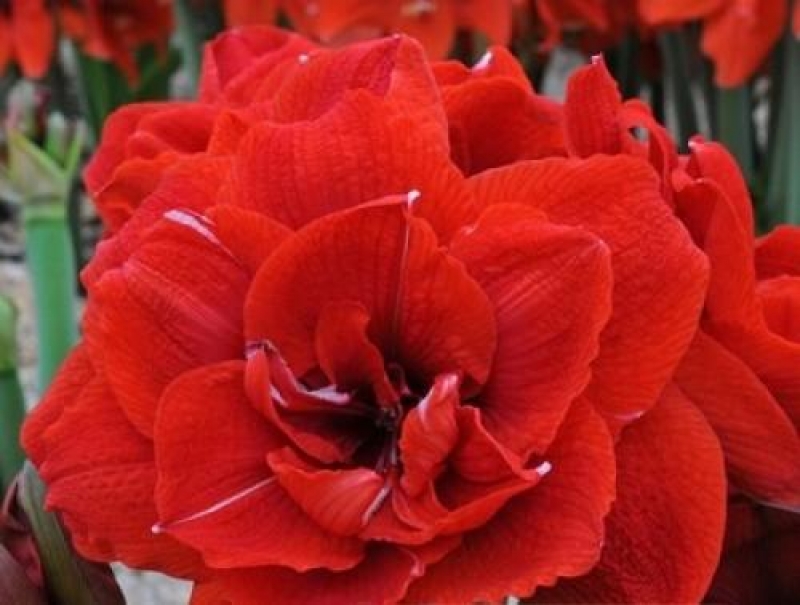
Cherry nymph - Lucky Strike - large red flowers with tucked petals.
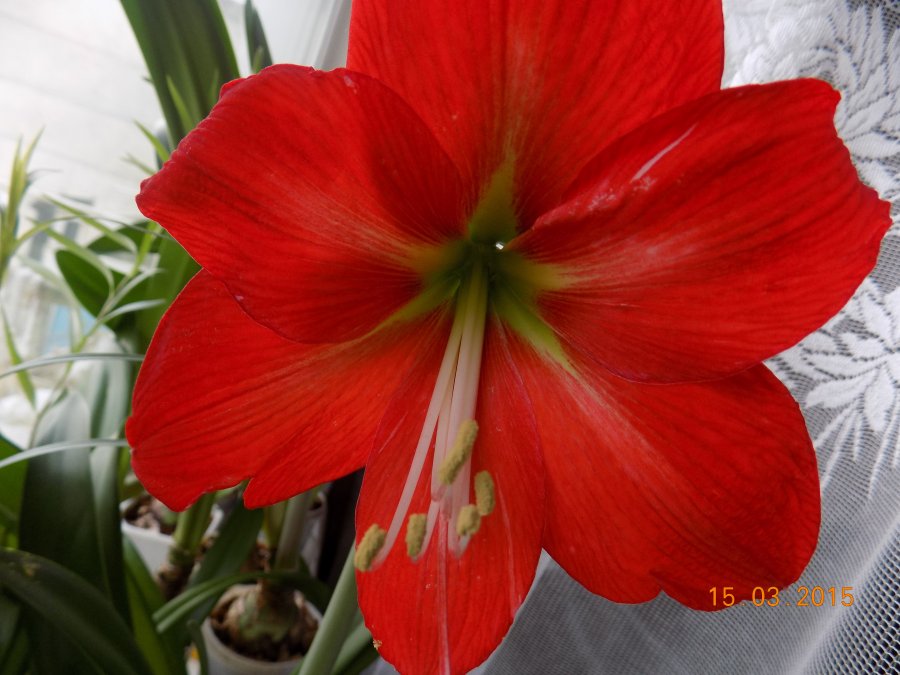
Lucky Strike - Double Dragan - large asymmetric terry flowers of a blood-red color.
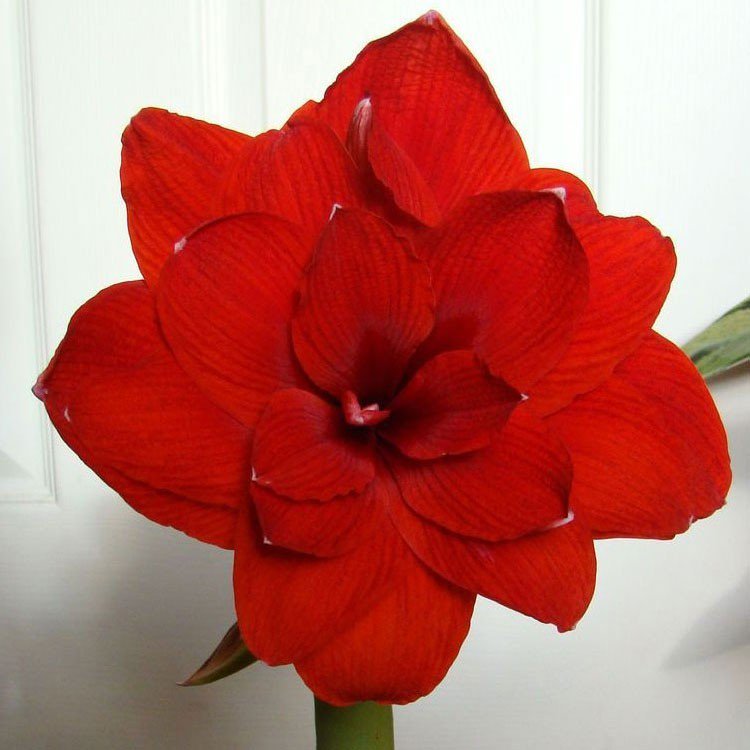
Double Dragan
The orange group includes such hybrids:
- Bouquet - large flowers of a salmon shade.
- Solomon is a large-flowered hybrid with bright orange petals.
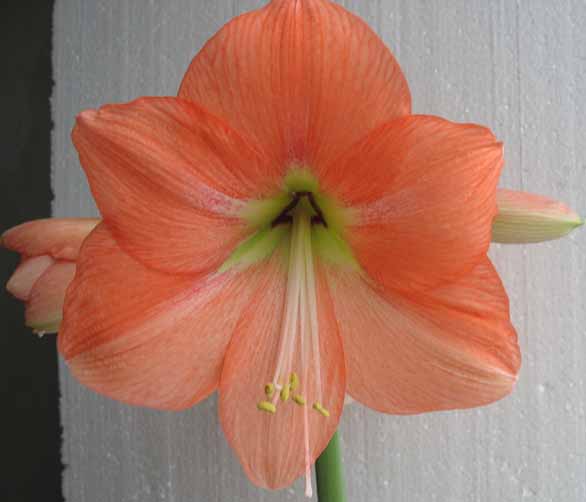
Solomon - Sumatra - red-orange flowers with very narrow petals.
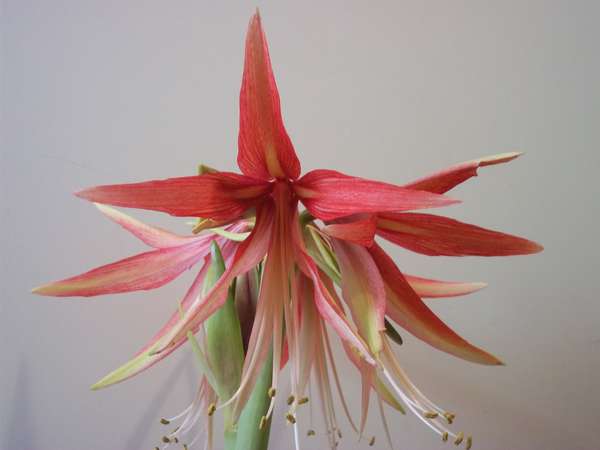
Sumatra
The following hybrids belong to pink hippeastrum:
- Pink Nymph - large terry flowers of a bright pink color.
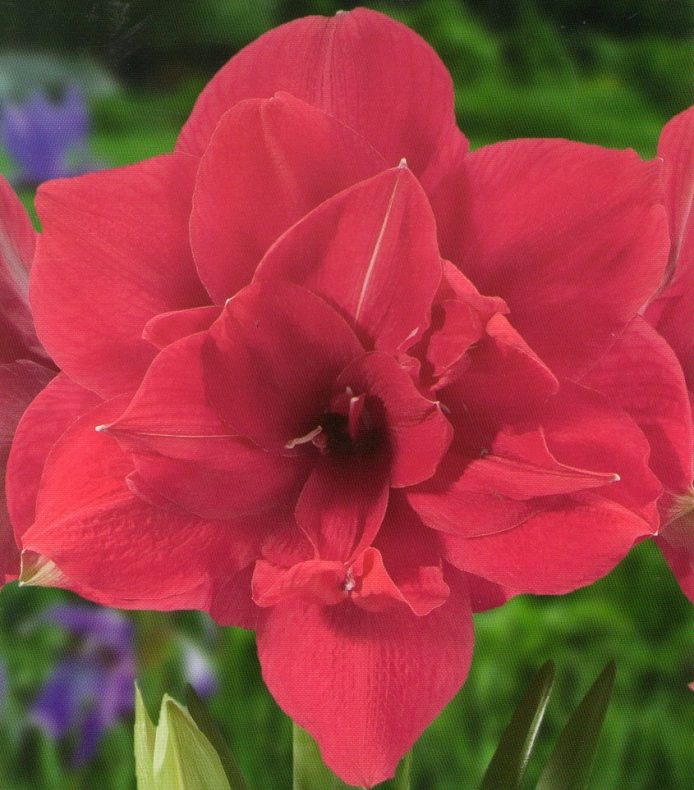
Pink nymph - Rosetta - large pale pink terry flowers.
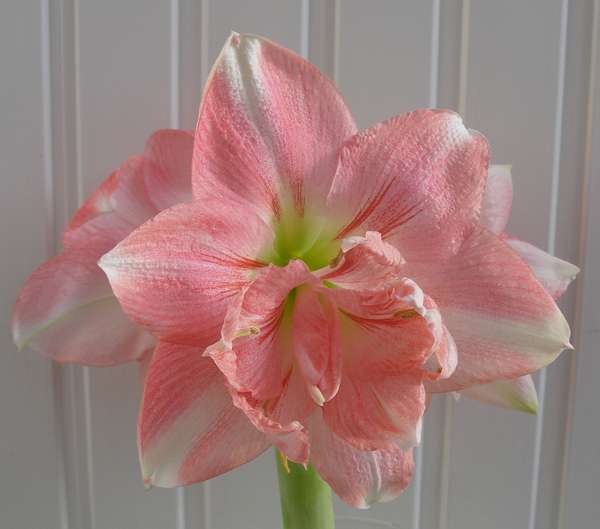
Rosetta - Sweet Nymph - terry variety with rich pink petals.
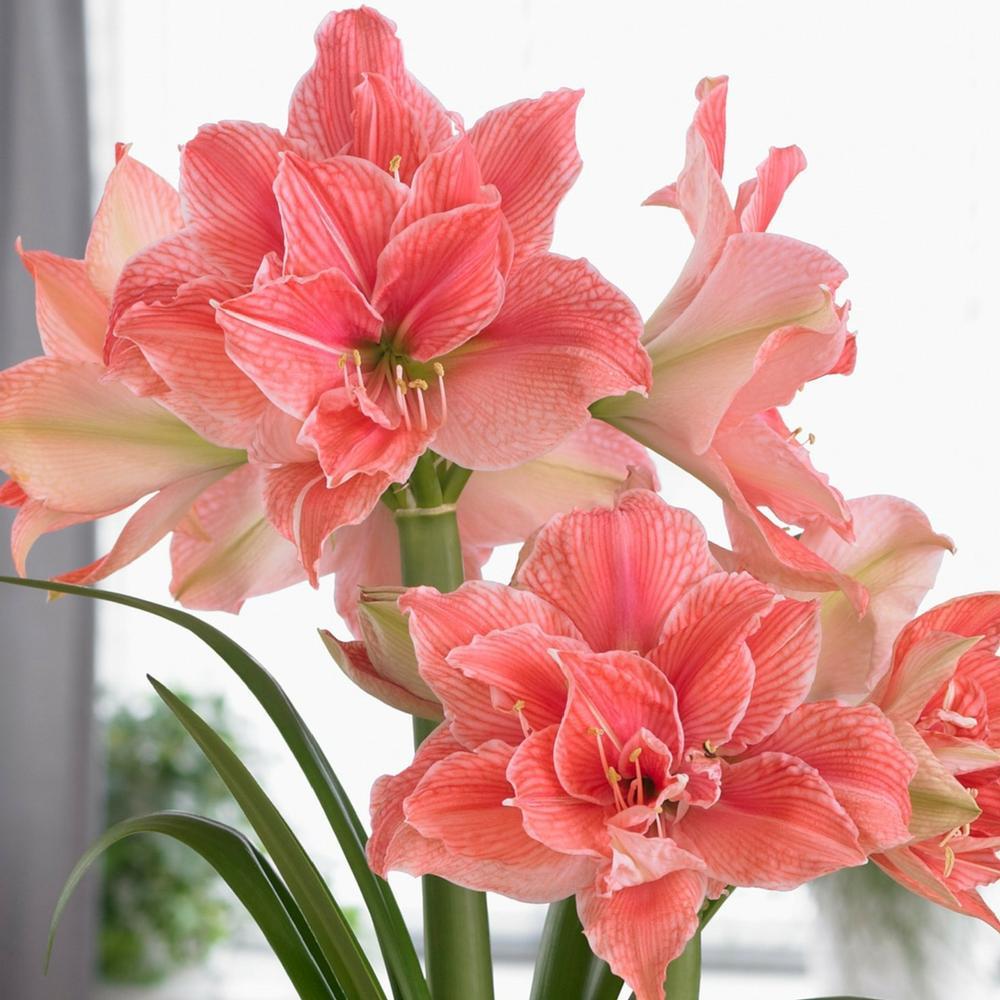
Sweet nymph - Danube - small flowers with dark pink petals.
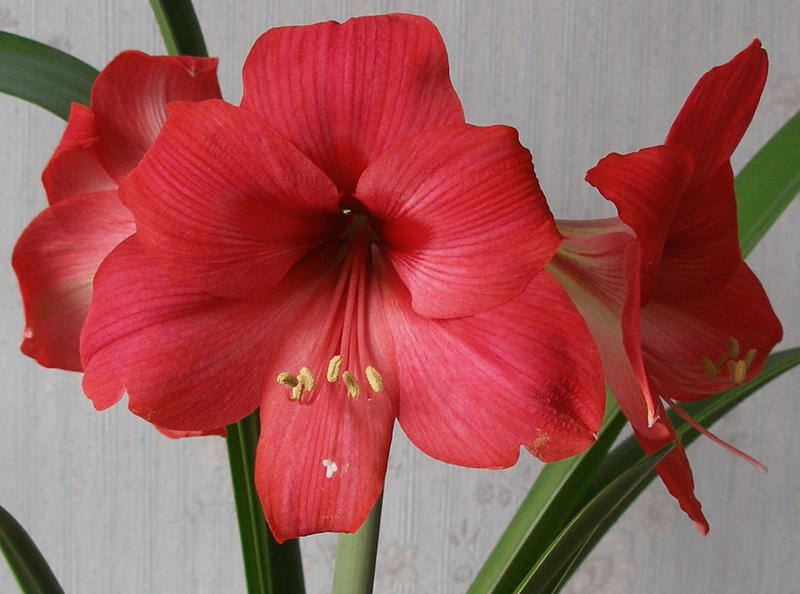
Danube - Milady is a large-flowered hybrid with simple pale pink flowers.
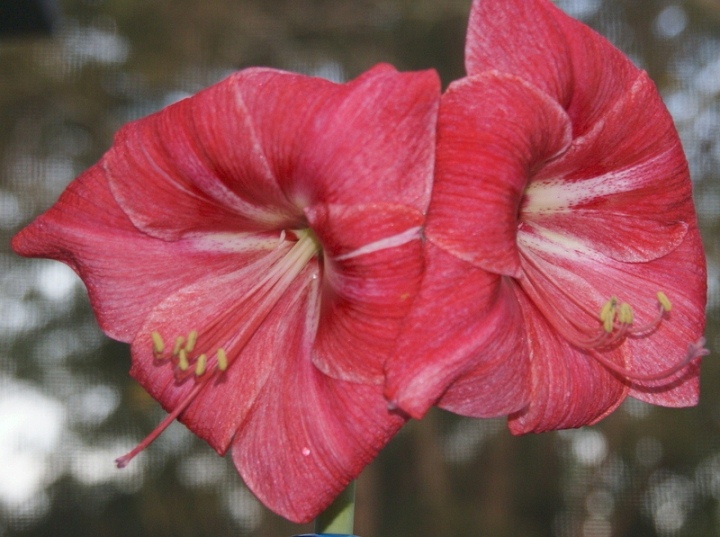
Milady
White hippeastrum is represented by such varieties:
- Alfresco - cream-colored peony flowers.
- Jewel - large semi-double flowers of snow-white color.
- Mont Blanc - large white flowers of a simple form.
- The Snow (Ice) Queen is a large-flowered terry hybrid with narrowed petals.
- Moonlight - large creamy white flowers.
The yellow group is represented by the following hybrids:
- Lemon Lime - flowers of a small size pale yellow with a green tint of color.
- Germa - small flowers with a creamy shade of yellow.
The green group includes the following hippeastrum:
- Evergreen - small-sized flowers of light green color.
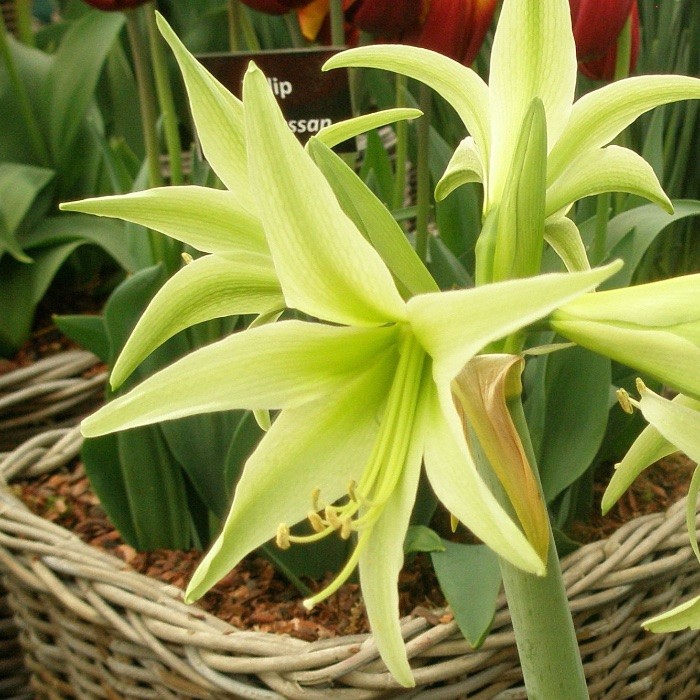
Evergreen - Green dragon - small flowers of light green color. The seamy side of the petals and the neck are a little darker.
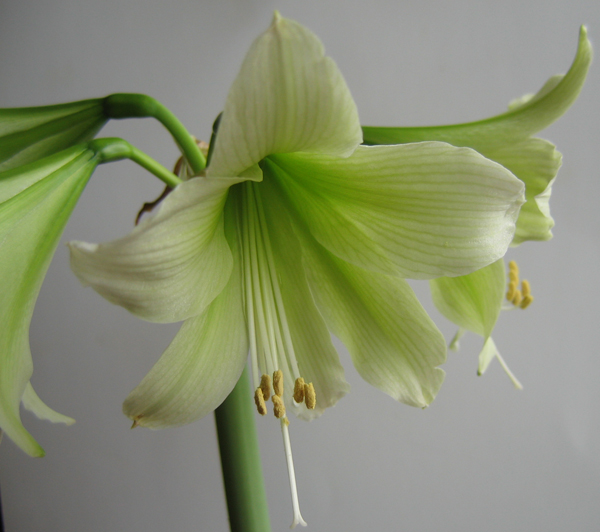
Green Dragon
Two-tone hippeastrum is represented by such varieties:
- Charisma is a large-flowered hybrid. On the snow-white petals, many bright red strokes with a high concentration in the central zone are applied. Each petal has a red border.
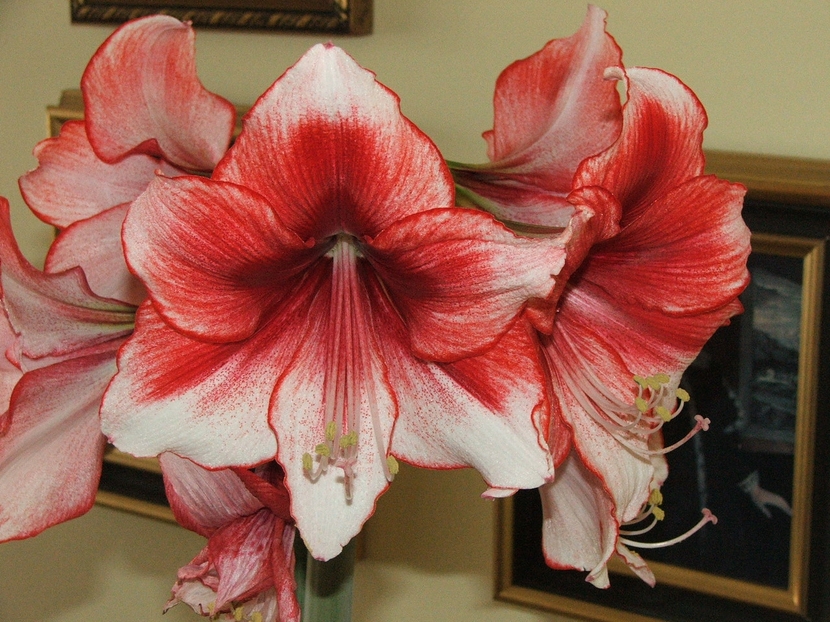
Charisma - Bianca - small flowers with snow-white petals and a green neck.
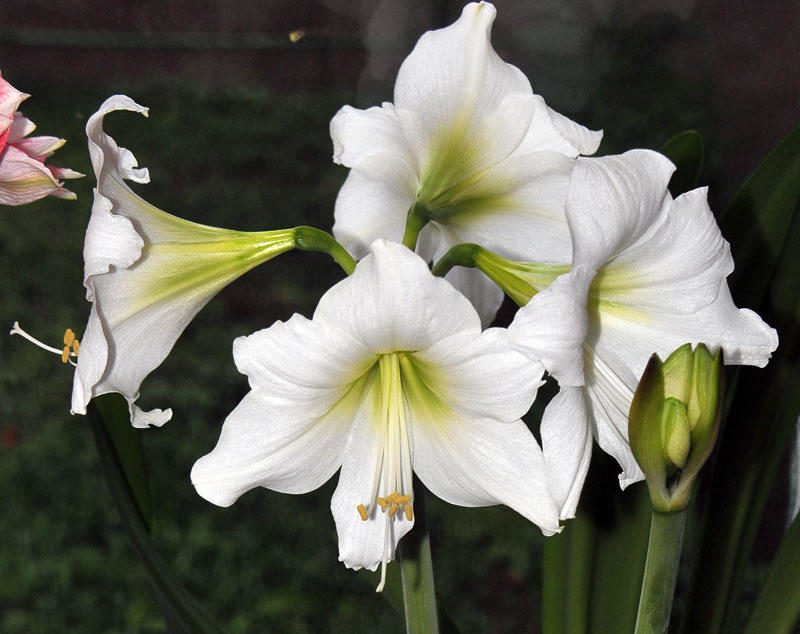
Bianca - Densin Queen - large double flowers, a combination of coral and white.
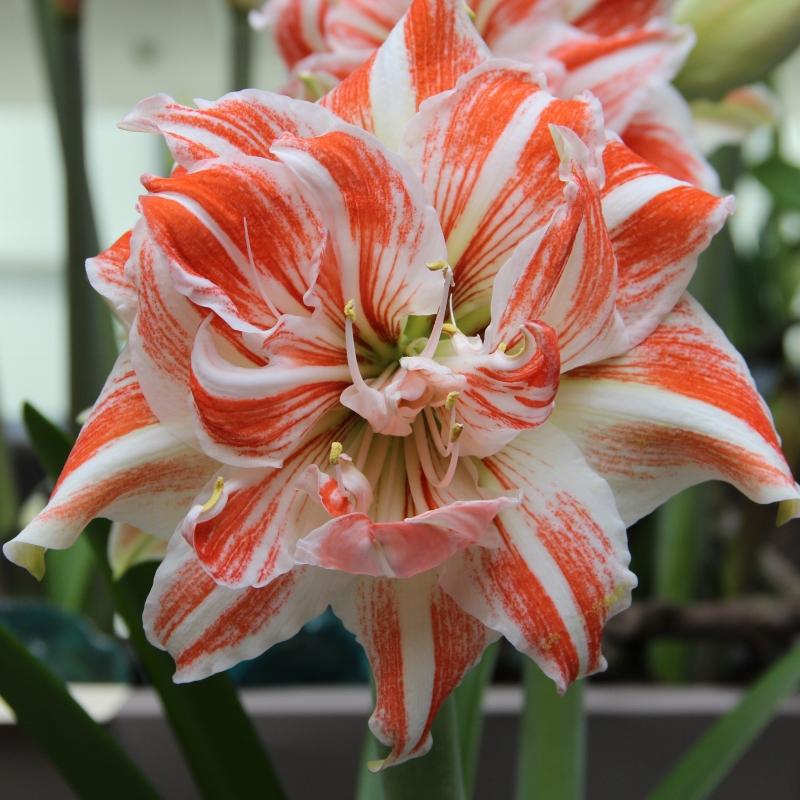
Densin Queen
The three hybrids of hippeastrum include the following hybrids:
- Piquant - the color of the petals is represented by a combination of salmon and red with a white longitudinal stripe in the middle.
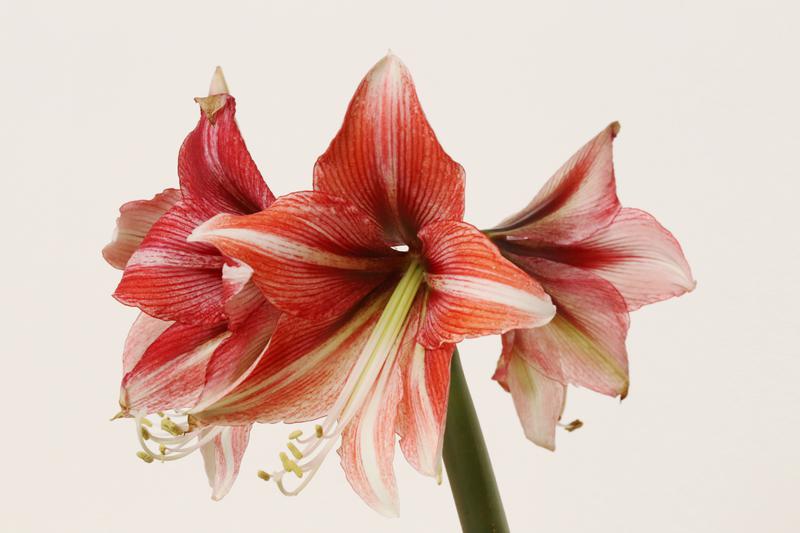
Spicy - Giraffe - creamy green petals with many thin burgundy stripes and a green neck.

Giraffe
In some hybrids, the color is variable. For example, the Moonlight variety blooms with cream flowers, which eventually acquire a creamy shade.
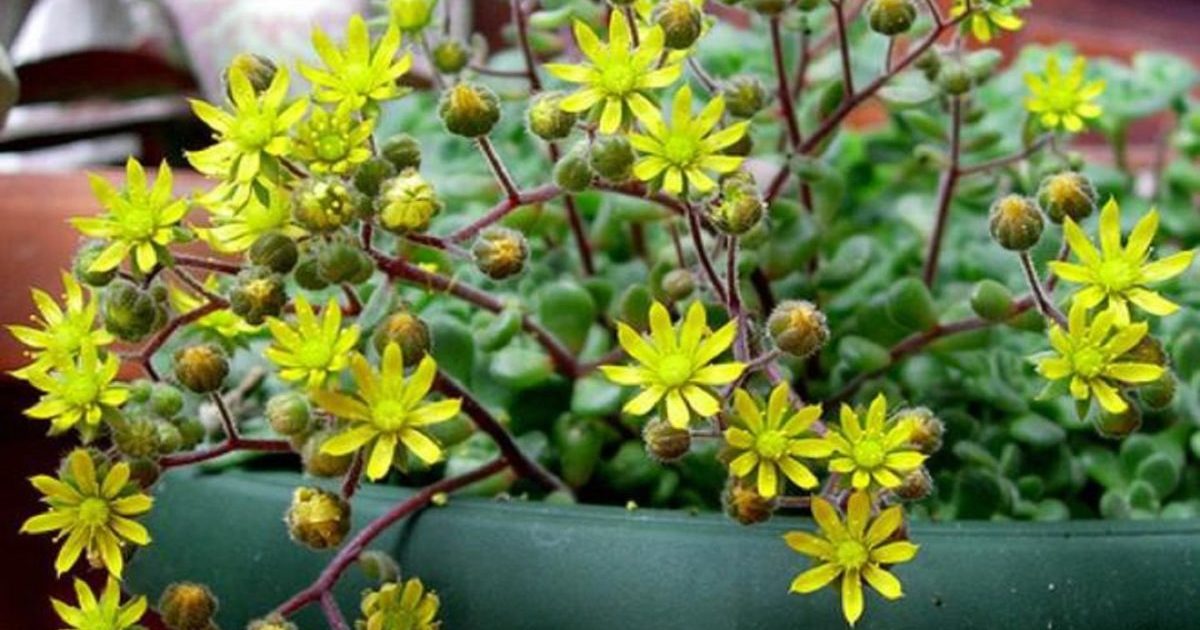 You may be interested in:
You may be interested in:The secrets and difficulties of caring for hippeastrum at home
Ensuring proper hippeastrum care at home is not at all difficult. The plant can not be called moody or whimsical. The only difficulty an inexperienced grower may encounter is flower wintering. Hippeastrum has a pronounced resting period. Caring for a plant in winter is different from leaving during the growing season.
Lighting
A flower needs a lot of bright diffused light. Experts recommend placing a flower pot on the south, southwest or southeast side. However, during a period of strong solar activity, it is desirable to shade the plant with a curtain.
On the windowsills, whose windows face west and east, the plant will need additional lighting. To do this, you can use special devices - phytolamps, or send fluorescent lamps to a flower.The distance between the hippeastrum and the lighting device should be at least half a meter.
Temperature and humidity
During the period of active growth, the plant feels great in the usual conditions of temperature and humidity for a living room. Many flower growers recommend planting a hippeastrum on flower beds or taking it out onto the balcony for the summer. In the fresh air, he grows stronger and rejuvenates.
In October, the hippeastrum begins a period of rest, which lasts until early spring. The flower systematically drops leaves, preparing for bed. When the last leaf dries and falls off, it is necessary to cut off the stem and move the pot to a dark room with a temperature of 6 to 12 ° C. Some gardeners recommend turning the pot on its side.
Watering and feeding
The flower is watered with settled water at room temperature. It is recommended to use the lower watering method, since moisture on the bulb is undesirable. Before the flowering period, the hippeastrum can be sprayed from the spray gun. When flowers appear, it is permissible only to wipe the leaves with wet wipes.
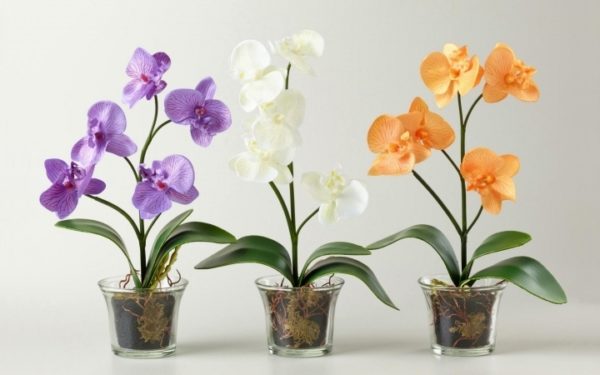 You may be interested in:
You may be interested in:Water the hippeastrum should be as follows:
- From the beginning of the growing season to the period of budding: watering begins with small portions, gradually increasing them. Estimated frequency of watering - 2 times a week.
- Budding period: every other day.
- Flowering period: daily in small portions of water.
- Period after flowering: watering is gradually reduced to 1 time per week.
- Dormant period: cancellation of watering.
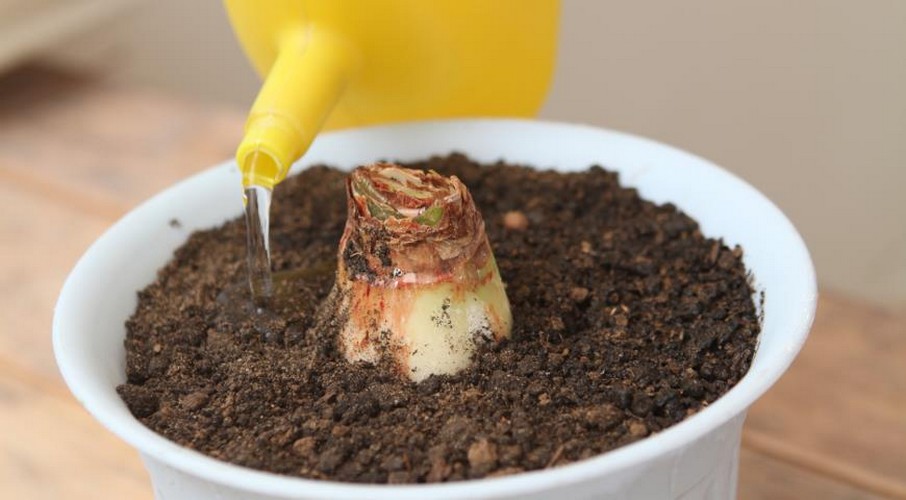
With fertilizer hippeastrum you need to be very careful. The plant is well suited for potash and phosphorus fertilizers, which provide flowering. Supplementation begins to be introduced during the budding period. Specialists advise halving the recommended dose in order not to burn the roots. Fertilizer is administered twice a month.
Some gardeners also recommend the use of nitrogen fertilizers. But root rot can develop from hippeastrum nitrogen, so experts advise to refrain from nitrogen fertilizers.
Diseases, pests and methods of dealing with them
Most often, hippeastrum suffers from the following diseases:
| Disease name | Symptoms | Treatment |
|---|---|---|
| Red rot | Signs of rot on bulb scales | Removing all parts of the plant affected by rot, complete soil replacement, fungicide treatment of all parts of the flower, sterilization of the pot. |
| Burn mushroom | Red spots on leaves and bulb | |
| Powdery mildew | White plaque on leaves and bulb | Fungicide treatment |
In addition to fungal and viral infections, a flower can become a victim of pests:
- aphid;
- scale shield;
- spider mite;
- worm.
You can get rid of harmful insects by treating the plant with an insecticide.
How to propagate and transplant a houseplant at home
Hippeastrums are transplanted every 2-3 years. A houseplant transplant occurs as follows:
- At the bottom of the pot spread a drainage layer of expanded clay, pebbles or broken brick.
- Then the pot is filled to the middle with soil: a mixture of turf land, sand, peat and humus (2: 1: 1: 1).
- The flower is freed from the old soil.
- The plant is carefully placed on the soil so that the bulb peeks out from the soil by a third. The remaining voids of the pot are filled.
- The soil around the bulb is slightly moistened.
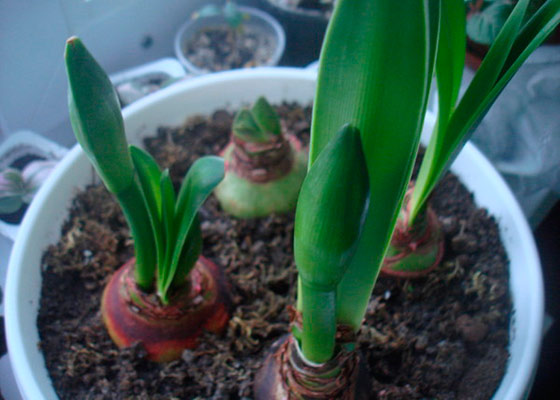
The optimal time for transplantation is August (after flowering) and December (preparation for hibernation). It is strictly forbidden to transplant a flowering plant. If such a need arises, just pour a little fresh soil into the pot.
The flower can be propagated by children and seeds. Now in more detail about each method.
Kids
Children fully retain the varietal characteristics of the mother plant. Bulbs with a diameter exceeding 20 mm are suitable for propagation. Children must have their own roots.
The breeding algorithm for children consists of the following actions:
- Small onions - children, are neatly separated from the mother bush.
- Places of damage are treated with activated carbon.
- Children are placed in a wet sand-peat mixture (1: 1). The optimal depth is a distance of 3-4 cm.
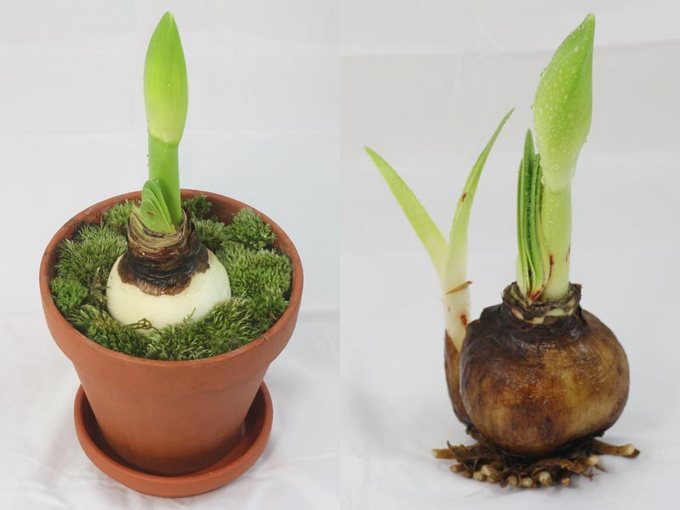
The first 2 years, flowers require special care. They should receive a lot of light without hibernation. The soil is moistened as the top layer dries. For hydration use only the bottom watering.
In the third year, matured children are transplanted as adult plants. Flowering can be expected already for 3-4 years of independent life.
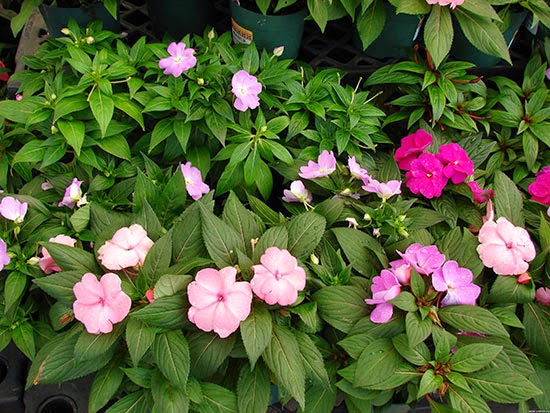 You may be interested in:
You may be interested in:Seeds
Plant seeds lose their germination very quickly. Therefore, sowing is carried out immediately after collection. To form seeds, a flower requires pollination. This can be done artificially or planted hippeastrum in the area and provide this opportunity to insects.
The removal of hippeastrum from seeds provides for such actions:
- Seeds are wrapped in wet gauze, and placed in an empty container. From above it is covered with glass. Capacity for 10 days is placed in a warm place with bright lighting.
- Hatching seeds are buried by 2 cm in a wet sand-peat mixture.
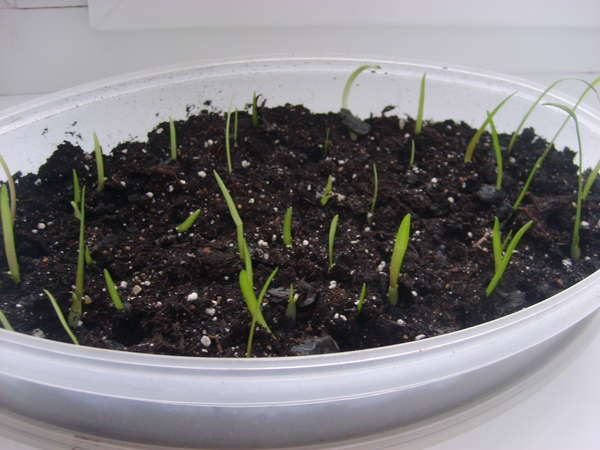
The first sprouts appear after 2-3 weeks. When the first 2 full leaves bloom on them, they are dived into separate containers. Caring for sprouts is similar to caring for hippeastrum children.
Common Growing Questions
Hippeastrum are very beautiful flowers. Varietal variety is striking in its large number. Growing a flower at home is not a hassle. Subject to all recommendations for care, for many years the plant will delight the eyes with its delightful colors.

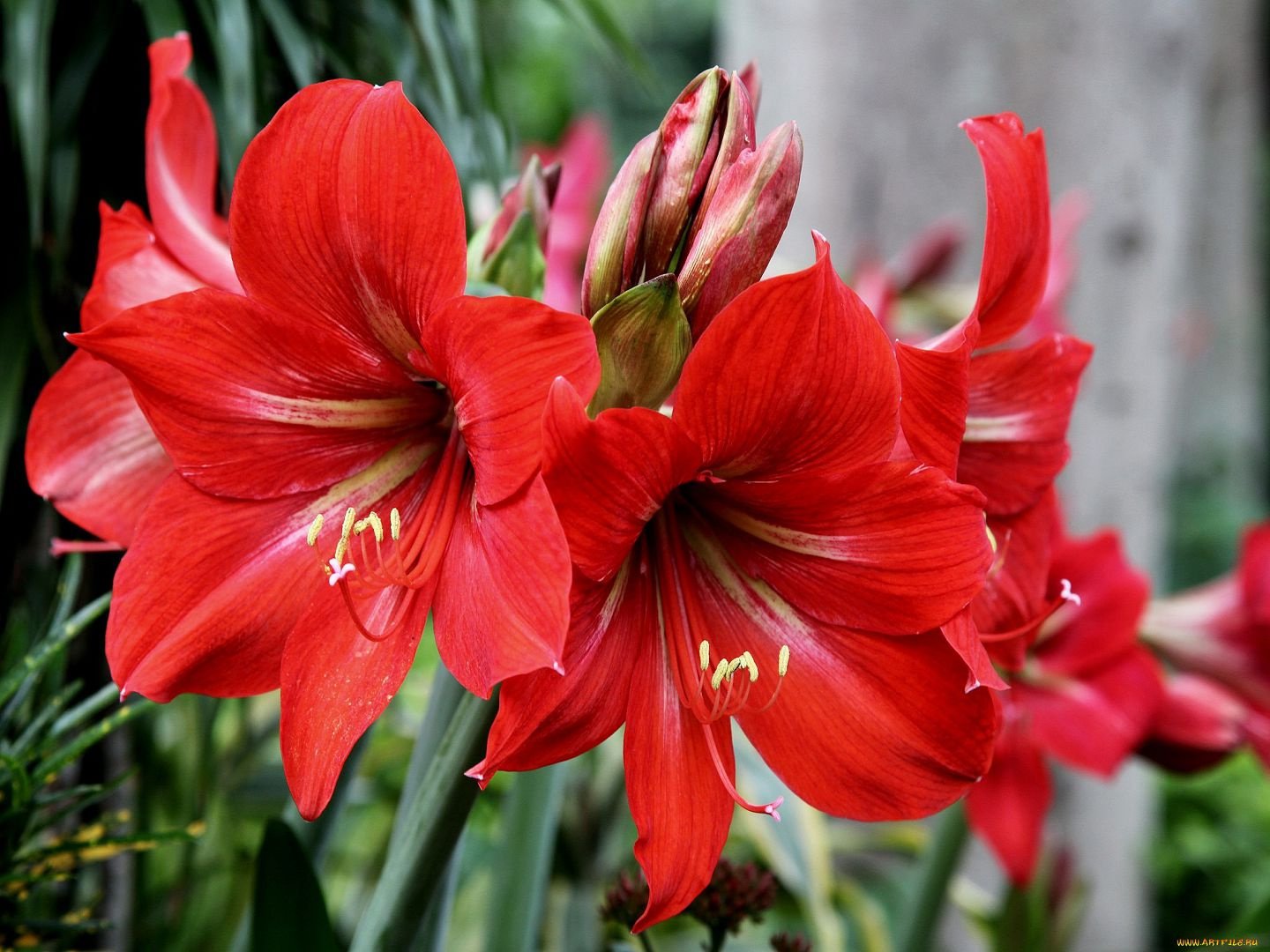
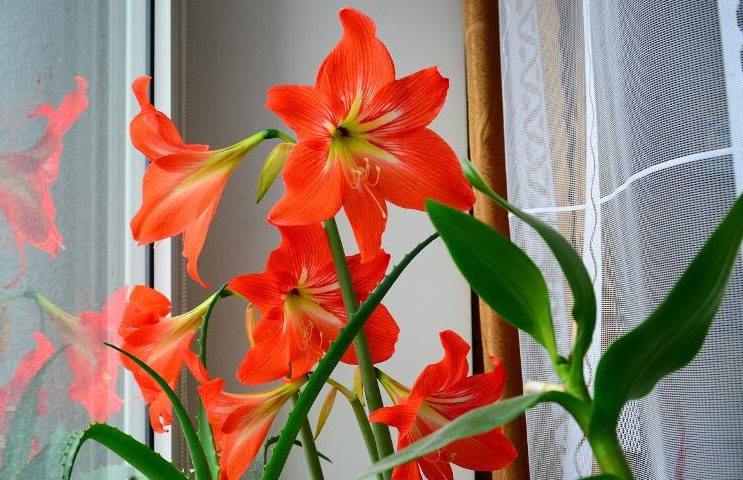
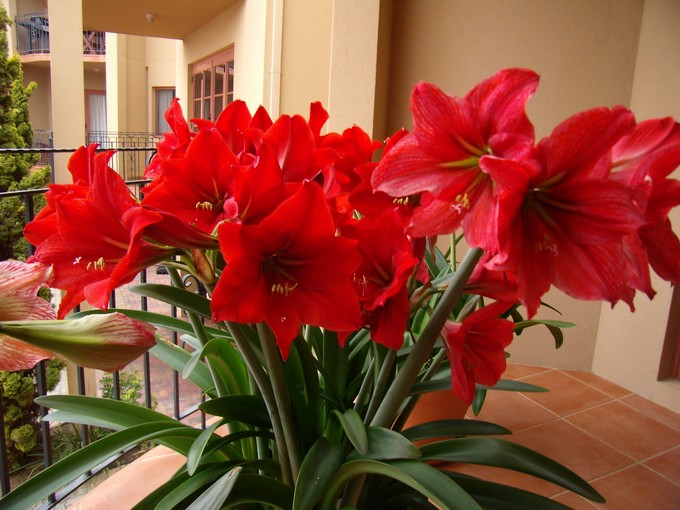
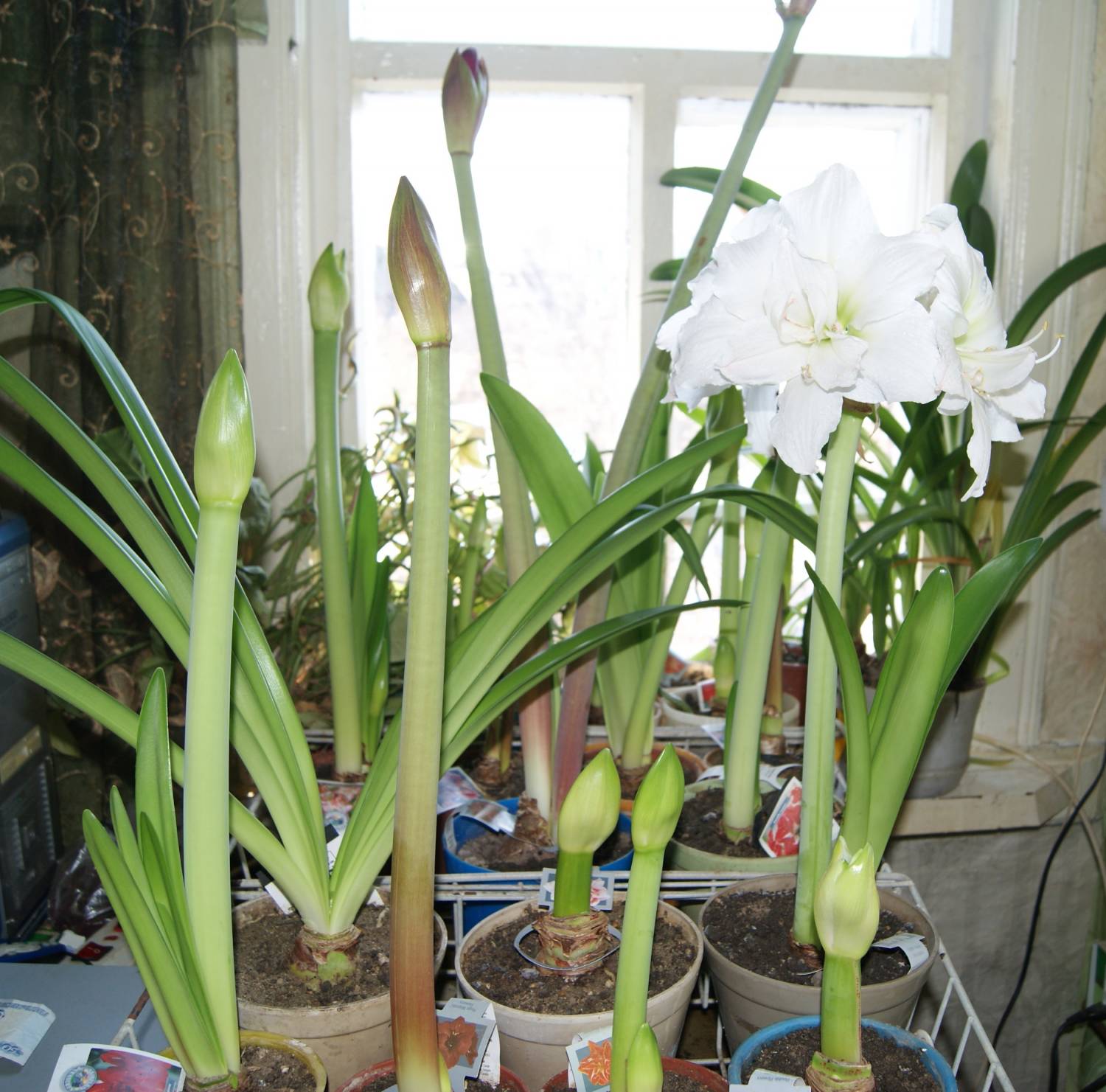
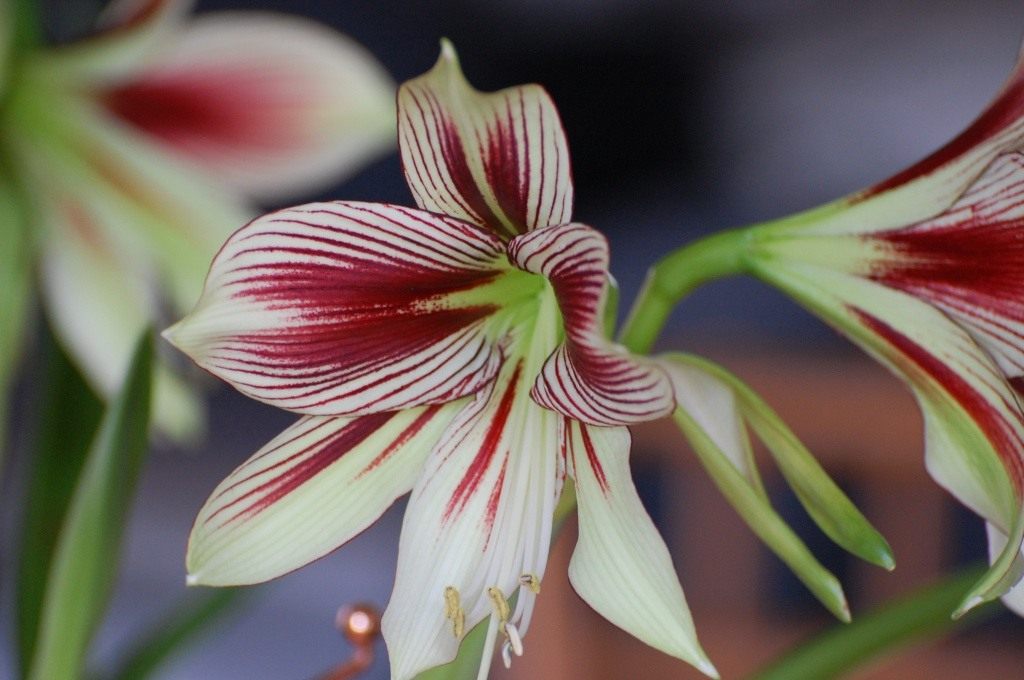
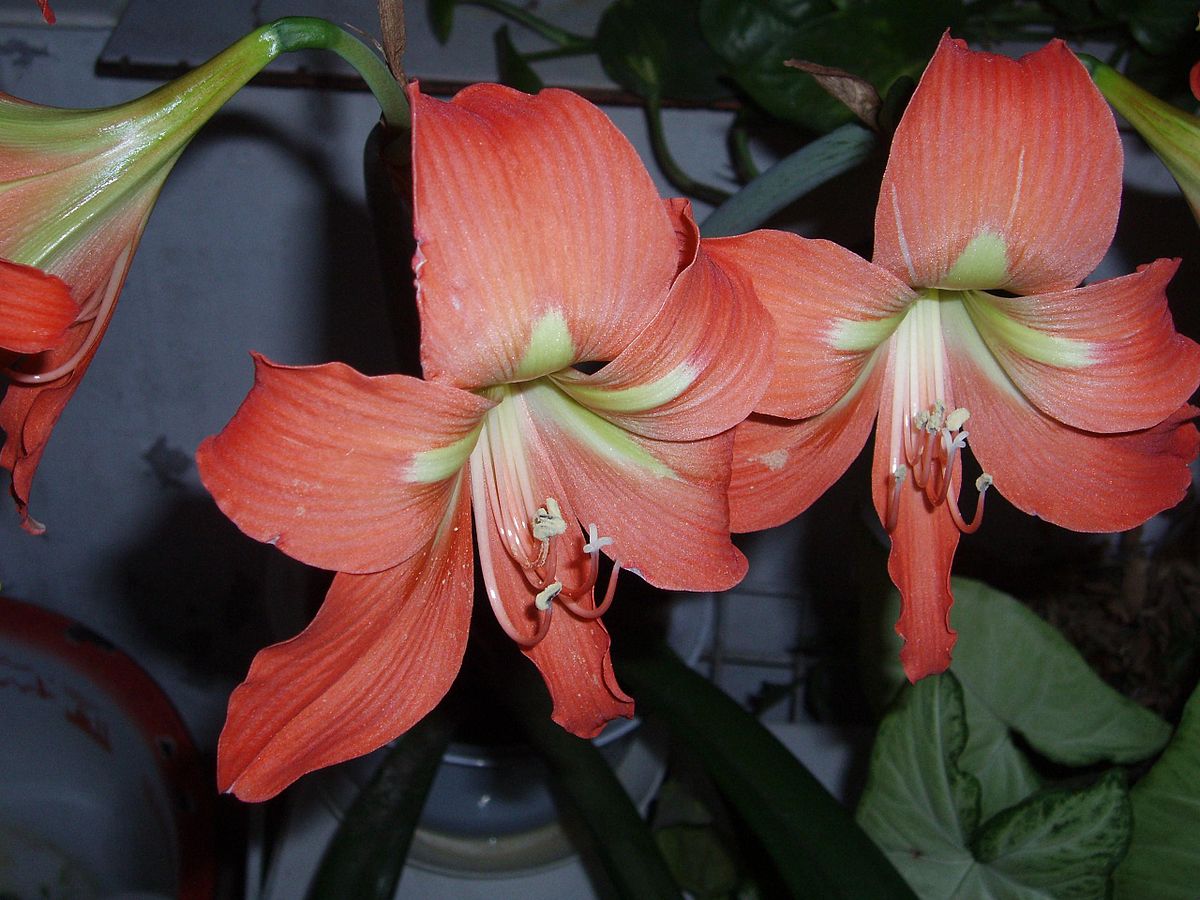



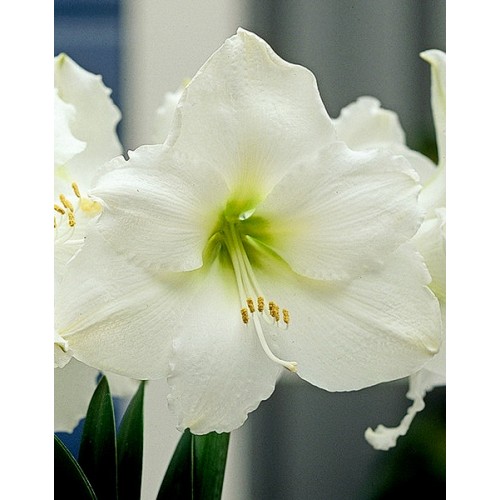
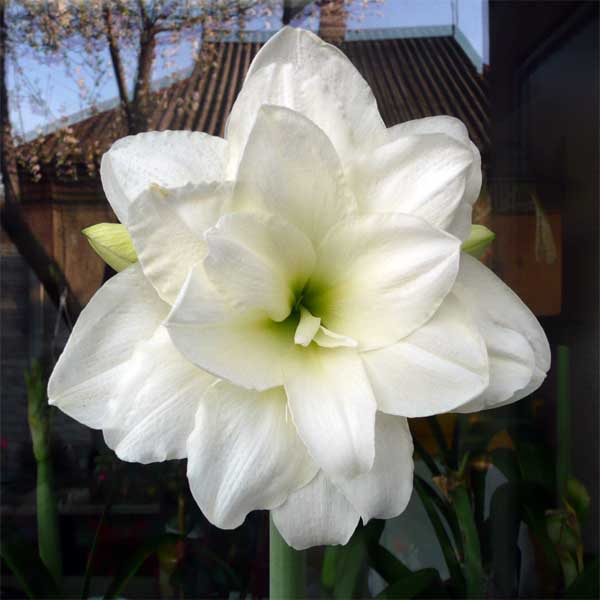
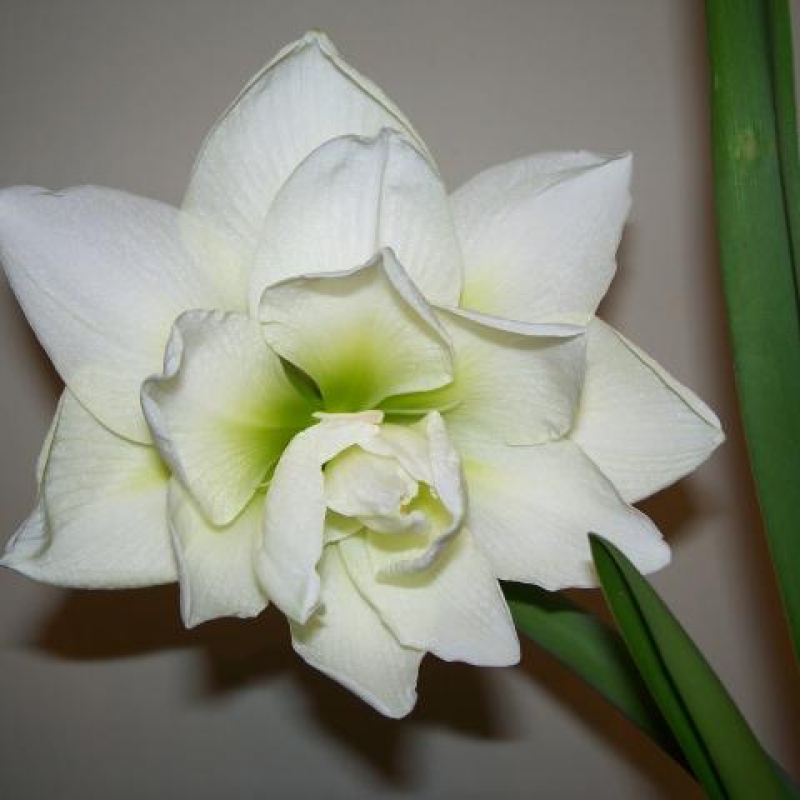
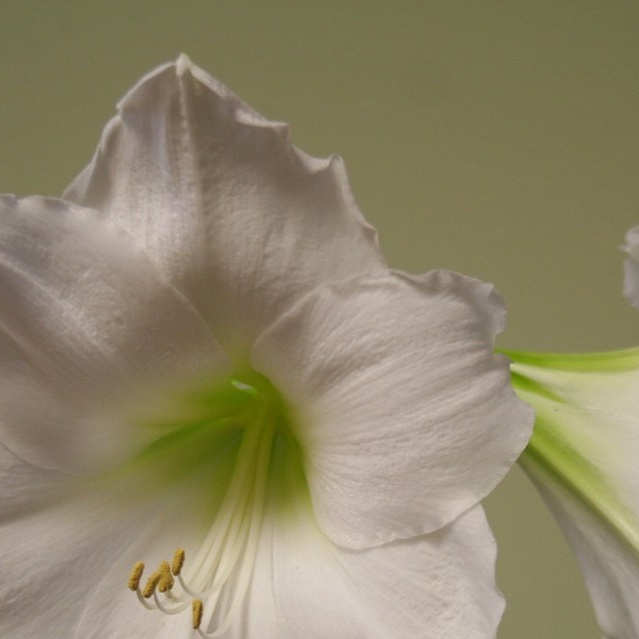
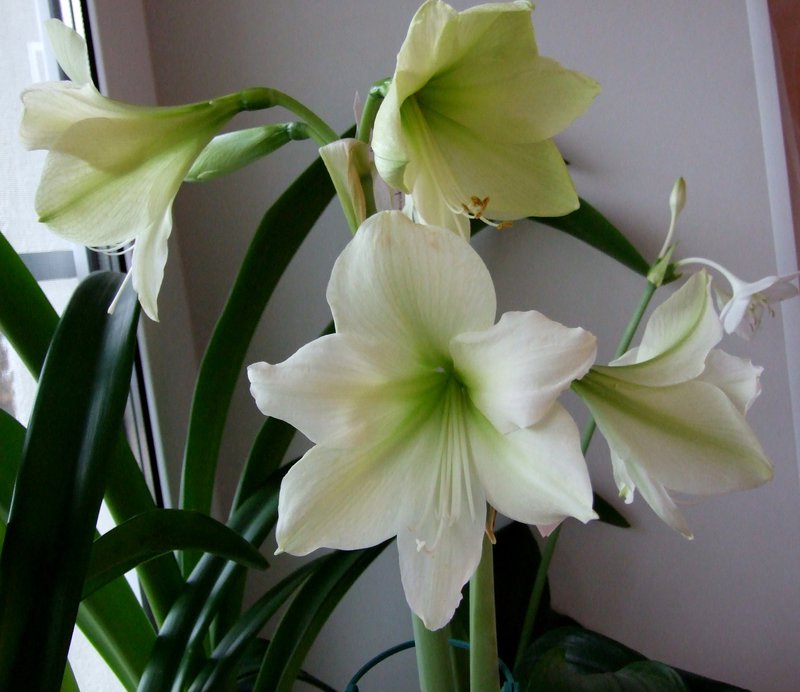
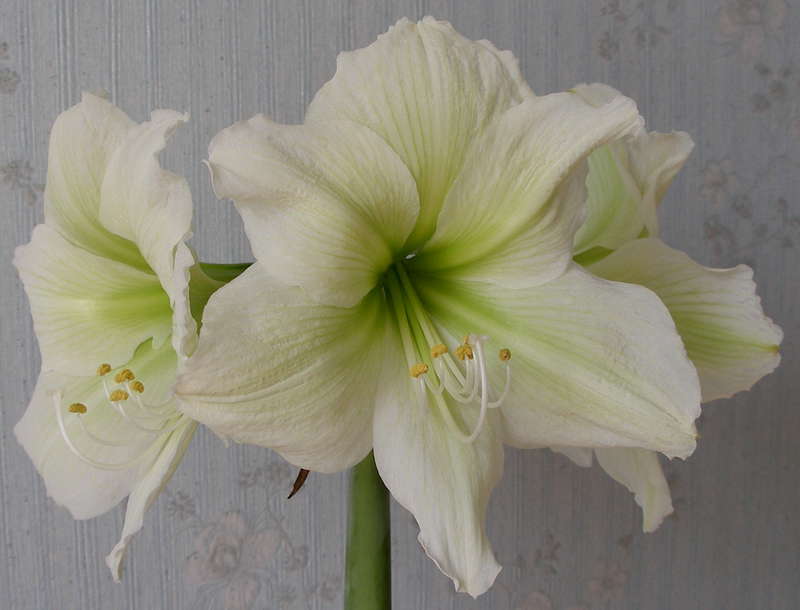
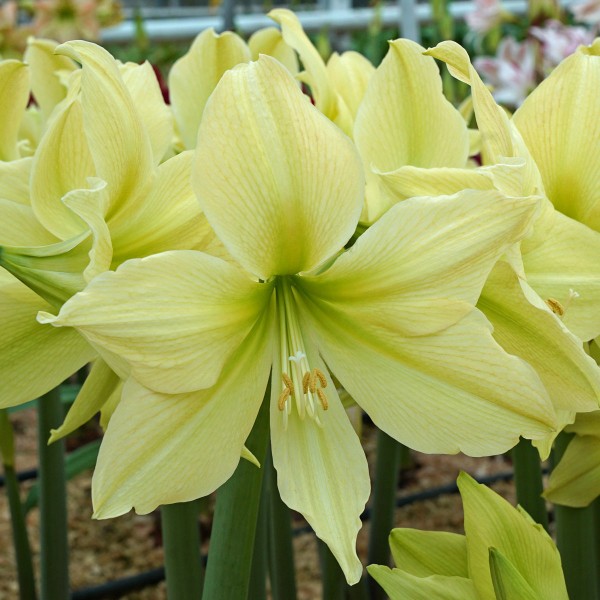
 Sow in the ground, without seedlings: 10 beautiful and unpretentious flowers
Sow in the ground, without seedlings: 10 beautiful and unpretentious flowers Platicodon planting and outdoor care
Platicodon planting and outdoor care Hosta - planting and care in the open ground in the Urals
Hosta - planting and care in the open ground in the Urals Oleander - care and growing at home
Oleander - care and growing at home